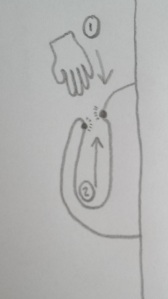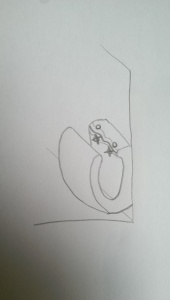Form follows function, so American architect Louis Sullivan has told us. I’m glad I learned this lesson from my mother when I was young, because as far as design is concerned I think it’s an essential one. And so, here I am with a gut full of bile reserved just for the Dyson Airblade.
There are, according to the Dyson website, three models of Dyson Airblade hand dryers, but this review isn’t about the Airblade V (which deserves just a tweeted review) or the newer Dyson Airblade Tap, which feels like it does so much that it doesn’t do any one thing especially well.
The Dyson Airblade dB is, and I must prefix this by saying I don’t work for Dyson and so have no idea how many iterations the core idea has been through, the second version of the generally quite impressive Dyson Airblade idea. If you’ve been in a London office that refurbished in the past few years, you’ll certainly have seen one of these strangely-shaped hand dryers. In brief they work on the principle of pressurised air being directed to “scrape” water from your hands, from wrist to fingertip, as opposed to the aimless blowing of hot air we knew before these things were invented.

You stick your hands into the slot up to your wrists and then, once the flow of air begins, steadily withdraw them over about ten seconds. The result is, as my doodle shows, a pair of dry and toasty hands in a fraction of the time it would take to rub them dry under an old-style hand dryer.
The problem is, that’s not what happens. It’s a very deliberately thought out procedure, and I’m careful to say procedure here, because the issue is that the design of the dryer itself doesn’t feel quite so deliberate.
On the older models of the Dyson Airblade, the dryer operated not continuously for the ten seconds necessary to dry your hands, but featured a pair of sensors that would detect the introduction of hands, start the air flow, then cut that air flow once the hands were clear, dry or not. The user, therefore, was to make sure they drew their hands out of the machine slowly enough that their hands would be dry before the sensors decided they’d had enough. But here’s where the problem really is: on those older models, the sensors were placed just under the lip of the part of the dryer fixed to the wall, aiming ever so slightly down to the floor, as my second terrible drawing shows. This meant that, when the joint nearest your fingertips reached the plane of the air flow, your fingertips themselves were usually just getting clear of the sensors, and so the machine would cut off just before you managed to scrape all that collected water off the very ends of your fingers. It’s like the inverse of fingerless gloves: your hands are completely and comfortably dry…apart from the parts of your hands that you use to actually interact with the world.
This meant that, when the joint nearest your fingertips reached the plane of the air flow, your fingertips themselves were usually just getting clear of the sensors, and so the machine would cut off just before you managed to scrape all that collected water off the very ends of your fingers. It’s like the inverse of fingerless gloves: your hands are completely and comfortably dry…apart from the parts of your hands that you use to actually interact with the world.
That’s the part of this that I can’t believe. I’ve always had a good deal of respect for James Dyson and admiration for his unusual solutions to problems. But what I can’t get around is the sense that this dryer was designed and prototyped without him, or anyone who had no idea how it works, testing it out like a first-timer. The whole issue could be fixed by just making the sensors detect the presence of hands (or whatever else people deign to put in these things) and just run the air flow for ten seconds, maybe twelve to be safe, without interruption. As it is, any time I use these machines I have to improvise a little hand-wiggle dance to keep the sensors active, drying one hand first and then the other, or drying them in reverse, fingers first, then taking my hands out of the machine at the open sides, then returning to dry my wrists, all the while looking like the loneliest raver pulling some awkward shapes in a bathroom corner.

And so, the Dyson Airblade dB. YES, they moved the sensors. is it an improvement? Certainly. As my final scribbling shows, the sensors on the dB are now closer to the top of the dryer, and so theoretically should be reading the presence of hands later than the older model. They still don’t however, at least not with the kind of reliability I know Dyson is capable of giving the world. my workplace houses a couple of these machines, and so I’m drying my hands in one about ten times a week, and there has not been a single occasion where I’ve not had to do a weird series of hand gestures just to make sure I don’t walk away with wet fingertips.
This whole review feels like the height of pedantry, or at maybe the lowest valley of absurdism. However if there’s one thing I’ve learned in my years its that adults, all of them, pick up along the road of life some really weird little habits and -isms that they just can’t shake, no matter how ridiculous. I don’t like to leave the bathroom with wet hands. Don’t ask me why. Just give me a machine that will deal with it as promised.
Dyson Airblade dB – inherits an A for unique concept from its forebear but also sadly inherits the same problem as well. It gets a 4.5/7 for still being better than the octogenarian breath delivered by other hand dryers, but one of those old cloth towel roll dispenser type things still has the edge for this nitpicker with wet hands.